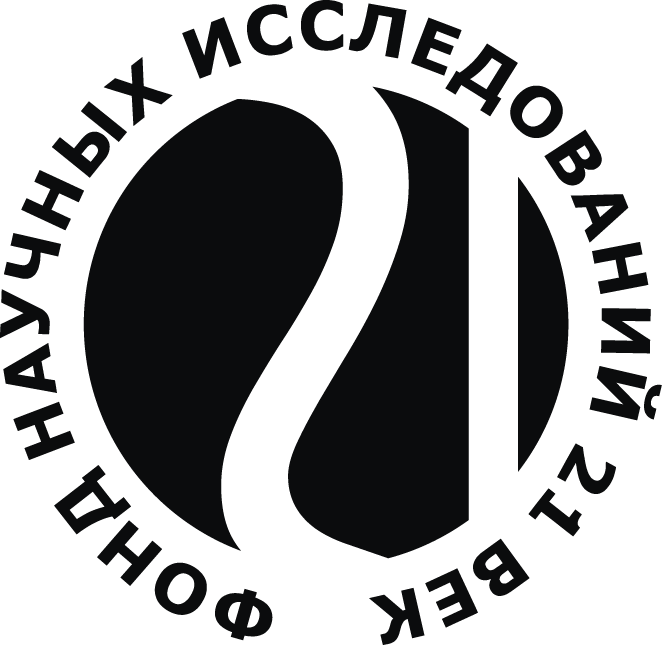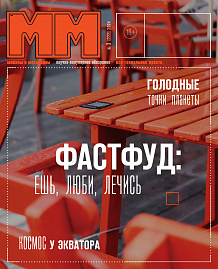Вертикальный перенос азота при слабых возмущениях как драйвер летнего накопления биомассы крупных диатомовых водорослей: модельные исследования
Аннотация
В летний период в Черном море регистрируется ежегодное цветение крупноклеточных диатомей с высокой концентрацией биомассы. Для объяснения этого явления была проверена следующая гипотеза: периодические небольшие возмущения (вихри в толще воды), повышающие вертикальный перенос элементов питания, способствуют увеличению накопленной биомассы крупных диатомей в летний период. Вычислительные эксперименты на предложенной математической модели показали, что слабые захватывающие слои до 50 м периодические возмущения приводят к накоплению высоких (свыше 2 г/м3) концентраций биомассы крупноклеточных диатомовых водорослей в верхнем перемешанном слое.
Ключевые слова
Полный текст:
PDFКак процитировать материал
Литература
Список русскоязычной литературы
1. Микаэлян АС, Зацепин АГ, Кубряков АА. Влияние мезомасштабной вихревой динамики на биопродуктивность морских экосистем. Морской гидрофизический журнал. 2020;27(6):590-619.
2. Силкин ВА, Паутова ЛА, Пахомова СВ, Лифанчук АВ, Якушев ЕВ, Часовников ВК. Экологический контроль структуры фитопланктона в северо-восточной части Черного моря. Журнал экспериментальной морской биологии и экологии. 2014;461:267-74.
3. Силкин ВА, Паутова ЛА, Федоров АВ. Годовая динамика фитопланктона Черного моря в зависимости от ветрового воздействия. Инженерные морские науки. 2021;9. DOI:10.3390/jmse9121435.
4. Силкин ВА, Паутова ЛА, Подымов ОИ, Часовников ВК, Лифанчук АВ, Федоров АВ. Фитопланктонная динамика и биогеохимия Черного моря. Инженерные морские науки. 2023;11: DOI:10.3390/jmse11061196.
5. Силкин ВА, Абакумов АА, Есин НИ, Паутова ЛА, Лифанчук АВ, Федоров АВ. Динамика фитопланктона и биогеохимия: модельные исследования. Инженерные морские науки. 2024;12. DOI:10.3390/jmse12010178.
Общий список литературы / Reference List
1. Mikaelyan AS, Zatsepin AG, Kubriakov AA. [Effect of mesoscale vortex dynamics on marine ecosystem productivity]. Morskoy Gidrofizicheskiy Zhurnal. 2020;27(6):590-619. (In Russ.)
2. Silkin VA, Pautova LA, Pakhomova SV, Lifanchuk AV, Yakushev EV, Chasovnikov VK. [Environmental control on phytoplankton community structure in the northeastern Black Sea]. Zhurnal Eksperimentalnoy Morskoy Biologii i Ekologii. 2014;461:267-74. (In Russ.)
3. Silkin V, Mikaelyan AS, Pautova L, Fedorov A. [Annual dynamics of phytoplankton in the Black Sea in relation to wind exposure]. Inzhenenernye Morskiye Nauki. 2021;9. DOI:10.3390/jmse9121435. (In Russ.)
4. Silkin VA, Pautova LA, Podymov OI, Chasovnikov VK, Lifanchuk AV, Fedorov AV. [Phytoplankton dynamics and biogeochemistry of the Black Sea]. Inzhenenernye Morskiye Nauki. 2023;11. DOI:10.3390/jmse11061196. (In Russ.)
5. Silkin VA, Abakumov AA, Esin NI, Pautova LA, Lifanchuk AV, Fedorov AV. [Phytoplankton dynamics and biogeochemistry: Model studies]. Inzhenenernye Morskiye Nauki. 2024;12: DOI.10.3390/jmse12010178. (In Russ.)
6. Arkhipkin VS, Gippius FN, Koltermann KP, Surkova GV. Wind waves in the Black Sea: results of a hindcast study. Nat Hazards Earth Syst Sci. 2014;14:2883-97.
7. Barton AD, Pershing AJ, Litchman E, Record NR, Edwards KF, Finkel ZV, Kiørboe T, Ward BA. The biogeography of marine plankton traits. Ecol Lett. 2013;16(4):522-34.
8. Cermeno P, Dutkiewicz S, Harris RP, Follows M, Schofield O, Falkowski PG. The role of nutricline depth in regulating the ocean carbon cycle. Proc Natl Acad Sci USA. 2008;105(49):20344-9.
9. Droop MR. The nutrient status of algal cells in continuous culture. J Mar Biol Assoc UK. 1974;54(4):825-55.
10. Field CB, Behrenfeld MJ, Randerson JT, Falkowski P. Primary production of the biosphere: Integrating terrestrial and oceanic components. Science. 1998;281(5374):237-40.
11. Finkel ZV, Follows MJ, Liefer JD, Brown CM, Benner I, Irwin AJ. Phylogenetic diversity in the macromolecular composition of microalgae. PLoS ONE. 2016;11(5): DOI:10.1371/journal.pone.0155977.
12. Flynn KJ, Kimmance SA, Clark DR, Mitra A, Polimene L, Wilson WH. Modelling the effects of traits and abiotic factors on viral lysis in phytoplankton. Front Mar Sci. 2021;8: DOI:10.3389/fmars.2021.667184.
13. Kiørboe T. A Mechanistic Approach to Plankton Ecology. Princeton: Princeton University Press; 2008.
14. Kiørboe T. How zooplankton feed: Mechanisms, traits and trade-offs. Biol Rev Camb Philos Soc. 2011;86(2):311-39.
15. Legendre L, Rivkin RB, Weinbauer MG, Guidi L, Uitz J. The microbial carbon pump concept: Potential biogeochemical significance in the globally changing ocean. Prog Oceanogr. 2015;134:432-50.
16. Litchman E, de Tezanos Pinto P, Edwards KF, Klausmeier CA, Kremer CT, Thomas MK. Global biogeochemical impacts of phytoplankton: A trait-based perspective. J Ecol. 2015;103(6):1384-96.
17. Litchman E, Klausmeier CA, Yoshiyama K. Contrasting size evolution in marine and freshwater diatoms. Proc Natl Acad Sci USA. 2009;106(8):2665-70.
18. Mikaelyan AS, Mosharov SA, Pautova LA, Fedorov A, Chasovnikov VK, Kubryakov AA. The impact of physical processes on taxonomic composition, distribution and growth of phytoplankton in the open Black Sea. J Mar Syst. 2020;208: DOI:10.1016/j.jmarsys.2020.103368.
19. Mikaelyan AS, Pautova LA, Chasovnikov VK, Mosharov SA, Silkin VA. Alternation of diatoms and coccolithophores in the north-eastern Black Sea: a response to nutrient changes. Hydrobiologia. 2015;755(1):89-105.
20. Raven JA. The role of vacuoles. New Phytol. 1987;106(3):357-422.
21. Redfield AC. On the proportions of organic derivatives in sea water and their relation to the composition of plankton. In: James Johnstone Memorial Volume. Liverpool: Liverpool University Press; 1934. p. 176-92.
22. Sarmiento JL, Gruber N. Ocean biogeochemical dynamics. Princeton: Princeton University Press; 2006.
23. Silkin VA, Pautova LA, Giordano M, Chasovnikov VK, Vostokov SV, Podymov OI, Pakhomova SV, Moskalenko LV. Drivers of phytoplankton blooms in the northeastern Black Sea. Mar Pollut Bull. 2019;138:274-84.
24. Stolte W, Riegman R. A model approach for size-selective competition of marine phytoplankton for fluctuating nitrate and ammonium. J Phycol. 1996;32(5):732-40.
25. Tilman D. Resource competition between planktonic algae: An experimental and theoretical approach. Ecology. 1977;58(2):338-48.
26. Tilman D. Resource competition and community structure. Princeton: Princeton University Press; 1982.
27. Tozzi S, Schofield O, Falkowski P. Historical climate change and ocean turbulence as selective agents for two key phytoplankton functional groups. Mar Ecol Prog Ser. 2004;274:123-32.
28. Verdy A, Follows M, Flierl G. Optimal phytoplankton cell size in an allometric model. Mar Ecol Prog Ser. 2009;379:1-12.
29. Volk T, Hoffert MI. Ocean carbon pumps: Analysis of relative strengths and efficiencies in ocean-driven atmospheric CO2 changes. In: Sundquist ET, Broecker WS, editors. The carbon cycle and atmospheric CO2: Natural variations Archean to present. Washington: American Geophysical Union; 1985. p. 99-110.
30. Ward BA, Dutkiewicz S, Jahn O, Follows MJ. A size-structured food-web model for the global ocean. Limnol Oceanogr. 2012;57(6):1877-1891.
DOI: http://dx.doi.org/10.24855/biosfera.v17i4.1005
© ФОНД НАУЧНЫХ ИССЛЕДОВАНИЙ "XXI ВЕК"










 ФНИ "XXI век" представляет: новый номер журнала "МАШИНЫ И МЕХАНИЗМЫ"
ФНИ "XXI век" представляет: новый номер журнала "МАШИНЫ И МЕХАНИЗМЫ"